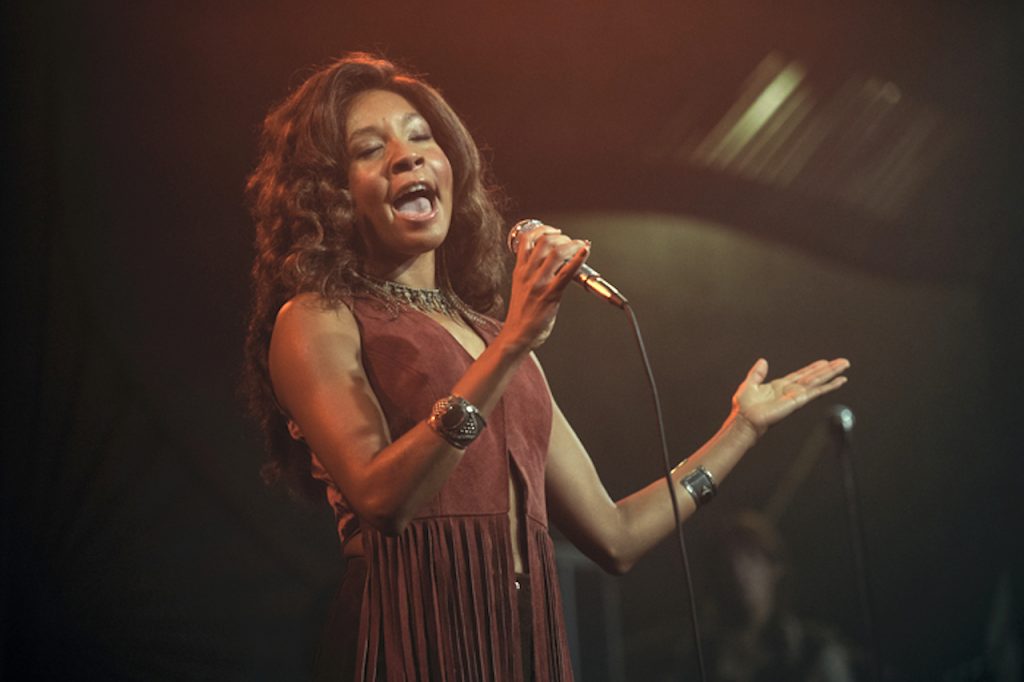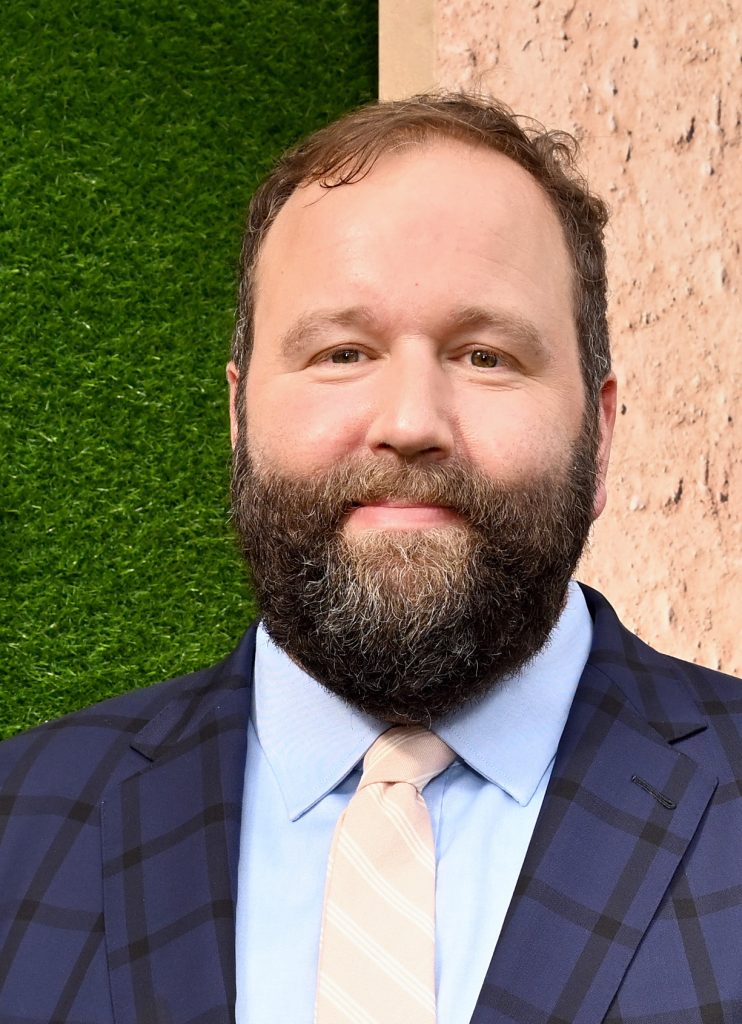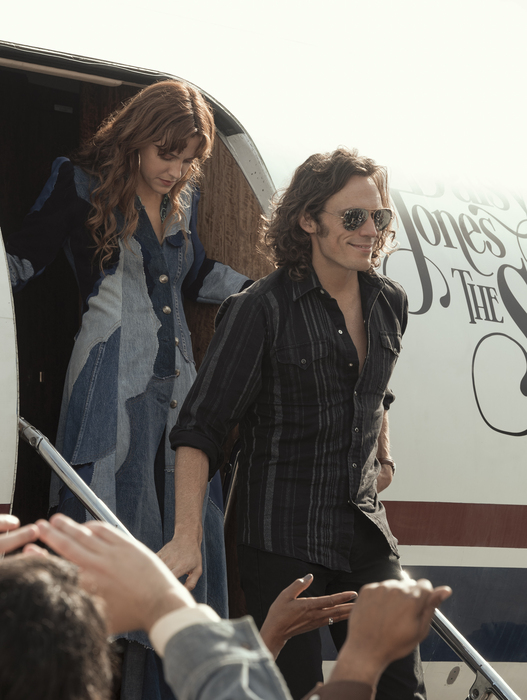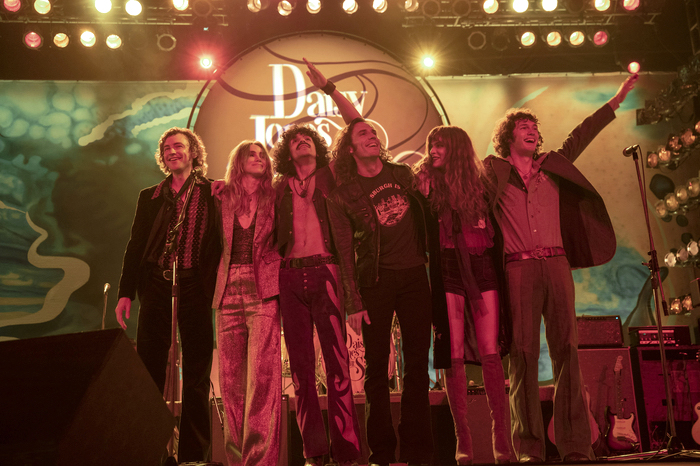The seventies was a defining decade for music which inspired the music scene for many years to come. Daisy Jones & The Six tells the story of the fusion of two highly-creative and highly-combustible musicians Daisy Jones (Riley Keough) and Billy Dunne (Sam Claflin) who formed one of the most successful rock bands ever. After a successful show at Soldier Field in Chicago, they suddenly called it quits.
Based on the 2019 novel of the same name by Taylor Jenkins Reid, which was partially inspired by her love of Fleetwood Mac, showrunners Scott Neustadter (The Fault On Our Stars, The Disaster Artist) and Will Graham (A League Of Their Own), who also directed an episode, adapted the novel into a mini-series on Amazon.
Hot off the heels of A League Of Their Own, Will Graham spoke with Creative Screenwriting Magazine about one of the GOAT fictitious bands Daisy Jones & The Six and how it made it to the screen.
Other than Fleetwood Mac, Taylor Jenkins Reid also discussed Bruce Springsteen as being a big influence on Billy Dunne’s character and Graham and Neustadter looked to Joni Mitchell to shape Daisy Jones’ character.
Will Graham and Scott Neustadter accepted Reid’s musical references, “but we felt like we wanted this band to sound and to feel in the storytelling like its own thing. We specifically avoided looking deeply at Fleetwood Mac and looked at a lot of other artists and bands from the era,” clarifies Graham. They also considered Judee Sill, who was one of the first women signed to Geffen Records, and Hart to further shape the musical palette of Daisy Jones & The Six.
“We met with a ton of musicians from the time and had conversations with them. And then, in looking at Simone’s (Nabiyah Be) story, we spent a lot of time looking at the early disco artists of the period and talk to a lot of people from that world too,” continues Graham.
Why Is Music From The Seventies So Special?
The seventies has a special place in modern history in terms of contouring popular culture. “Coming out of the intense idealism of the late sixties, part of what was interesting to us about the music of the seventies was a lot of it was really intensely emotional.” The creators worked with executive music producers Blake Mills and Tony Berg who produced many tracks on Daisy Jones & The Six. “They were really focused on using the recording technologies from the period, not doing things that you wouldn’t have been able to do at the time,” adds Graham. “And not just replicating the sound of the seventies, but really making it feel like this was a great album that somehow had fallen under the bed and everyone had forgotten about. But when you heard it, it didn’t sound exactly like anything else.”
The story of a rising band, plagued by corrosive personality clashes, simmering resentments, egos, narcissism and creative differences reaching unimaginable heights before abruptly collapsing in a heap is quite familiar. In order to make Daisy Jones & The Six stand out, they diverted attention away from the band itself and into the characters. “When I read the book, you have this feeling of being intensely close to the characters. A lot of times when we see rock and roll stories, it almost feels like you’re in the audience and you’re being told how cool the characters are and how cool the world is from a distance.”
Daisy Jones & The Six touches on some darker themes. The band was riding a tidal wave of success, yet they self-sabotaged themselves until it all came crashing down.
Graham was drawn to the humanity of these flawed characters. “They’re complicated, but also well-intentioned in a lot of ways,” he states. He also adds that, “you still don’t see a lot of stories that are told with female protagonists through the female gaze.”
“I think that is very much what Taylor brought to the book that’s so powerful is that there are four incredibly strong female characters in the book and in the TV show that aren’t at each other’s throats. Their relationships are complicated, but nuanced, and they have love for each other.” Will Graham, who is non-binary, chose to step back from the masculinity traditional associated with rock and roll.
He views the confounding of gender expectations as one of his attractions to Taylor Jenkins Reid. “Daisy Jones is referred to as an “It Girl.” She embodies a lot of what people want to see in an attractive woman, but she also has some traits that we would think of as traditionally masculine. She’s a bulldozer, she’s a leader, and she’s not going to give any ground.”
Graham is deliberately subtle with messages of gender identity and expression (or lack of). He’s cognizant of the seventies era when gender politics had a different vocabulary. He gently folds Simone’s story into the sexuality mix. “I think in Simone’s story, I bring a lens of queerness into it and and take her into a world of predominantly black queer clubs that disco came out of.” Will Graham believes Saturday Night Fever is the main cinematic reference for people, with many dismissing disco as substance-less.
“If the core message of disco is just dance, coming from queer people and people of color, is actually kind of a revolutionary statement. Part of it is saying ‘let’s not hide.’ And that was something that in my own lens, in my own world, resonated really deeply.”

(Simone) Nabiyah Be. Photo by Lacey Terrell/ Prime Video
Dismissed as a fad, Saturday Night Fever was a cultural phenomenon which tapped into the veins of the exploited, the ignored, and the marginalized. (Read our interview with documentary filmmaker John Maggio about Robert Stigwood, Mr. Saturday Night).
Disco clubs were a place where you left your daily struggles at home and people from all walks of life escaped their troubles through dance. It was beyond acceptance. Disco just let people live in the joy of being themselves. Daisy Jones & The Six gives people a safe, joyful space they don’t have in their lives.
Will Graham recalls his days as an eleven-year-old queer kid. “All I knew really was that I didn’t fit into the world that was in front of me. I was stressed out by that, so I retreated into television shows, comic books and novels. And then, that became a processing space for me to figure out how I could live my life.”
Not fitting in is your superpower
Adapting The Novel Into A Documentary Film
“I think Taylor Jenkins Reid does such a beautiful job writing very unorthodox characters in a way that America has really embraced,” says Graham. That was his entry point into the TV series.
“What was really incredible about this adaptation was the format of the novel, the kind of oral history format, that made it unlike any other adaptive process that I’ve ever done.”
Daisy Jones & The Six is told in a documentary format. “What was fascinating about that is there are lots of points in the novel where you can’t tell that Billy and Daisy have different versions of a story, or neither one of them really wants to talk about something that happened, or things that are intentionally left ambiguous.” There are interviews in the TV series where the characters are giving conflicting accounts of events.

Will Graham. Photo by Michael Kovac/ Getty Images for Prime Video
Daisy Jones & The Six was never a real band, but they could have been. The partial documentary format gave it a veneer of believability, authenticity, and realism. Daisy has a powerful dramatic narrative with the occasional documentary interlude. “I think it’s part of what makes the voice of the book speak so beautifully, and it’s just a format that we use in different ways throughout the show, But that lends a kind of third dimension to the storytelling,” states Graham.
“One of my favorite aspects of working with that format is when you can’t tell that people are lying or whether they’re telling you their recollections a little bit differently than actual events.” Since Daisy Jones & The Six isn’t an actual band, it can be argued that nothing in the documentary sections is real.
“That gives the story sometimes a bit of a Rashomon quality, or at least the feeling of you’re seeing these things interpreted through very different perspectives,” declares Graham.
Will and Scott decided to make an album of the band’s songs they could feature in the television show. “The process of was just an incredible experience and getting to be a fly on the wall in writing sessions with Blake Mills, Jackson Brown and Phoebe Bridgers was amazing. So much of what we saw in those rooms where the music was getting made, went into the show. A lot of what Teddy Price (Tom Wright) says is influenced by what Blake and Tony say.”
“In terms of the documentary style, we have to move through time in the story, so it became a way of doing that in a way that hopefully feels organic and coherent. But it’s also giving little bits of information, because there’s a whole other story that’s happening around the documentary about where these characters are in their lives now and what their future might look like.”
Love – Soulmates And Mirrors
Daisy Jones & The Six covers remarkable thematic ground. Ultimately, it’s a love story, “whether you’re falling in love with someone who can genuinely be a partner to you, or whether you’re falling in love with someone because on some level they reflect you, or you can see yourself in them.”
Love is about empathy and understanding what each person needs from a relationship. Do soulmates really exist, or do we project the idea onto people through mirrors?
Love is about making choices – not all of them easy or pleasant. Will Daisy and Billy move forward together?
“I’m always drawn to writing about people and groups of people who care about something more than themselves. These are people who are living for the music, finding each other and falling in love with each other through it,” continues the creative.

Daisy (Riley Keough) & Billy Sam Claflin. Photo by Lacey Terrell/ Prime Video
“I love that this is a story that asks the question, ‘Is love more than one thing and can you really be in love with more than one person?’ And from a queer perspective, from a human perspective, that we’re talking about relationships in this show that are really nuanced and complicated and don’t fit a lot of our traditional structures.”
“I think that’s the really beautiful thing about Daisy and Billy’s relationship. The one thing they never are with each other is indifferent. From the moment that they meet each other, I think each of them is aware that they’ve encountered someone who’s incredibly significant to them who has a lot of meaning for their life.”
“They could be enemies, they could be lovers, they could be passionate collaborators, but ultimately they’re never going to have feelings that stay inside just one of those boxes. I think about it like a beautiful concept in Japanese of someone who was your soulmate in another lifetime. That was a concept that was really helpful to me in writing their relationship. They’re deeply linked, but there’s a lot of layers on top of what that love is.”
They’re complementary, but also supplementary and then they’re never going to be the married couple that take each other for granted and get bored.
“Daisy and Billy converge towards understanding themselves in each other better towards self-knowledge and ultimately towards making a choice making choices that are more about their their survival and their well-being as people, and not necessarily their well-being as artists.”
In conclusion, we asked Will Graham to identify a defining moment in the show. “I love the moment in episode 9 where Daisy and Billy have been at each other’s throats for a long time and then she plays him a new song that she’s written. There’s something to me about how they’re able to metabolize hating each other into loving each other, and writing songs about it that. That is really beautiful and speaks to what the show is.”
